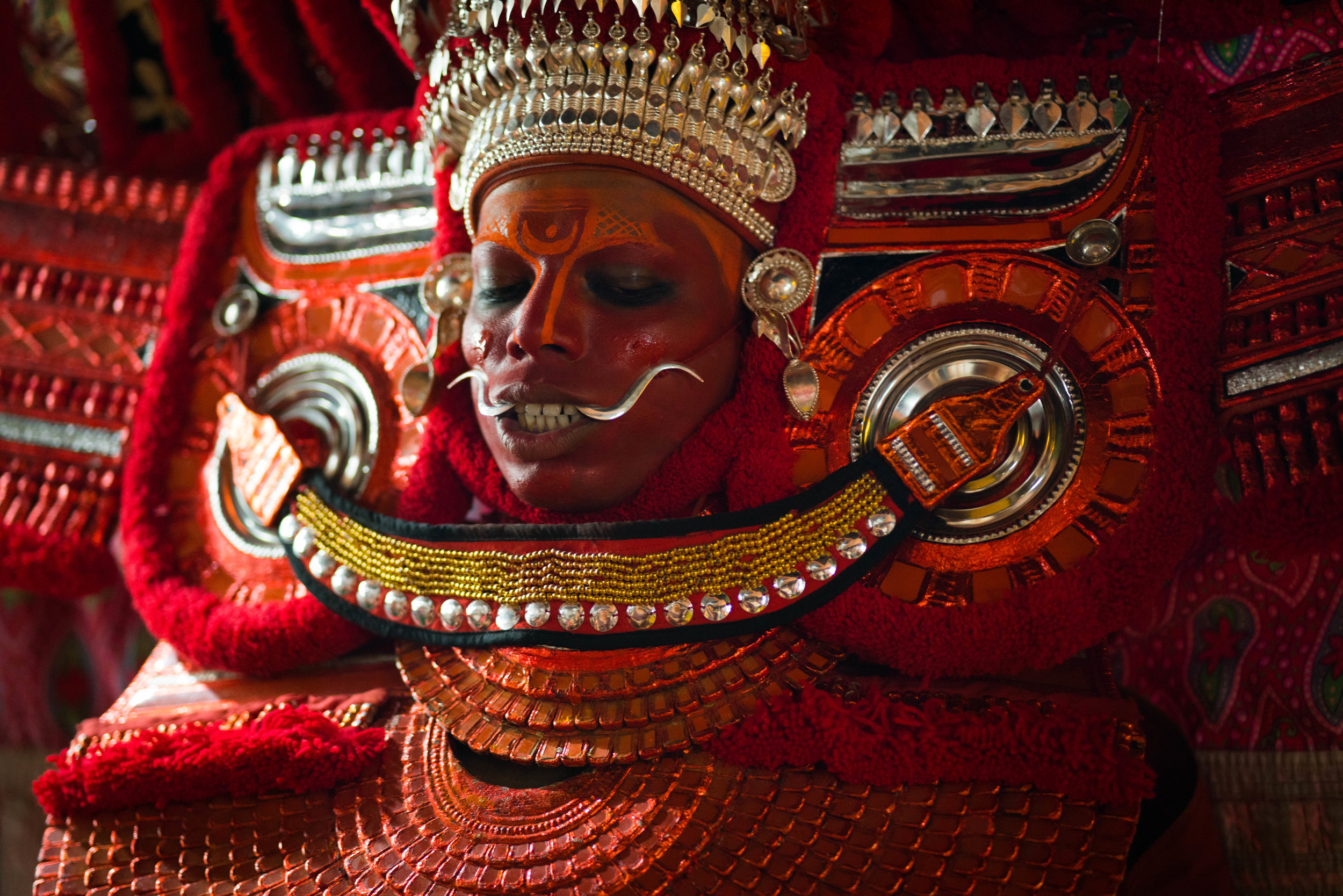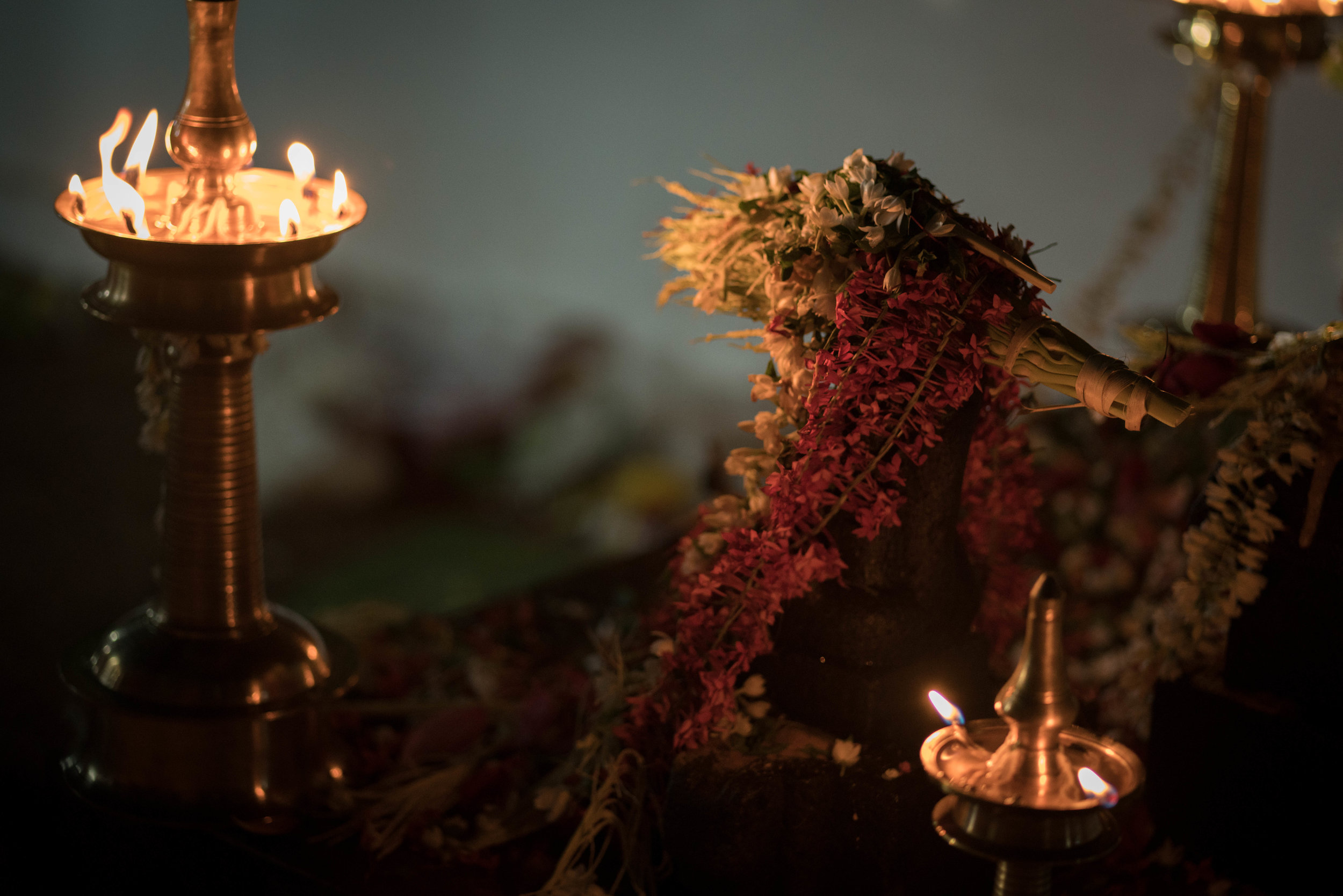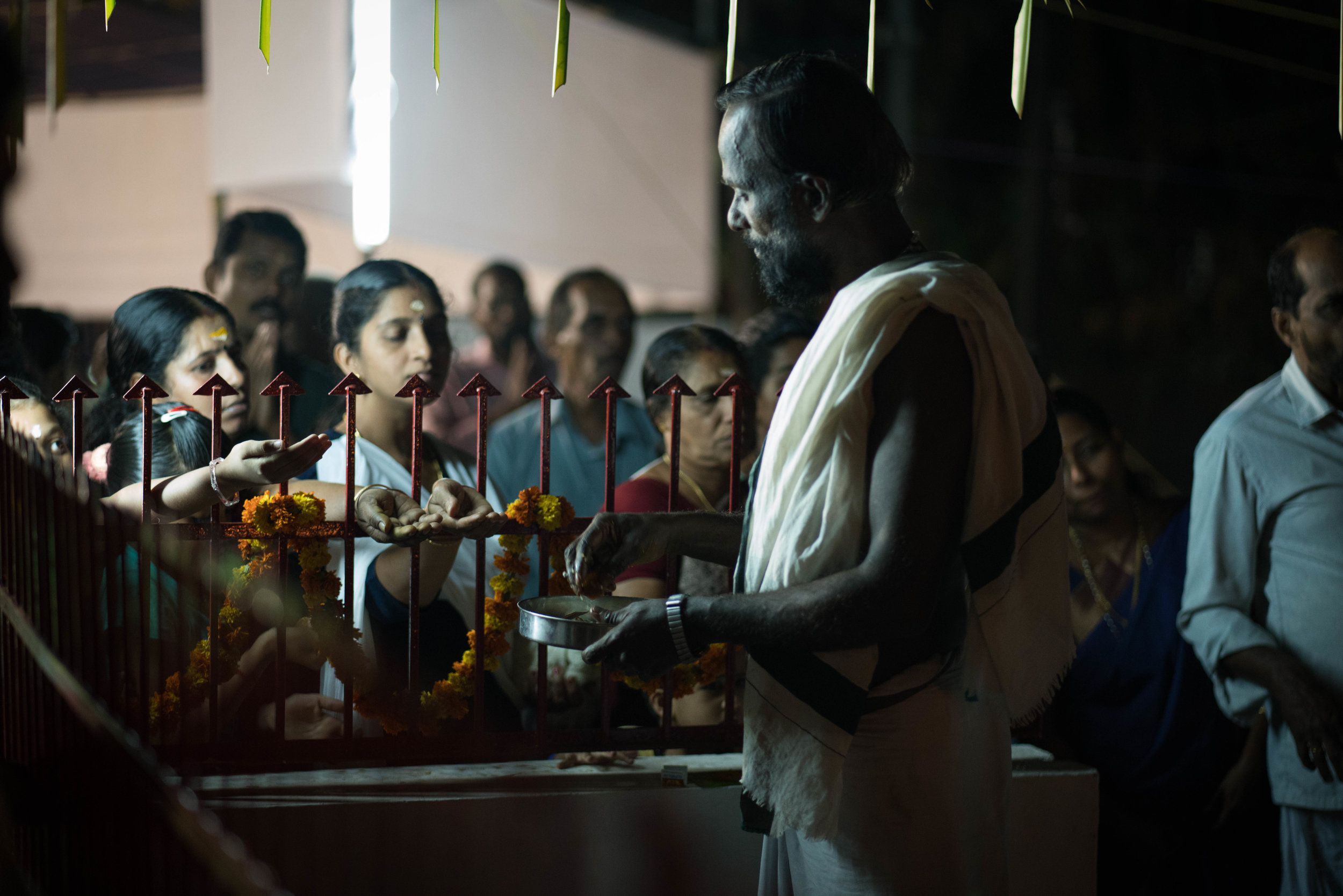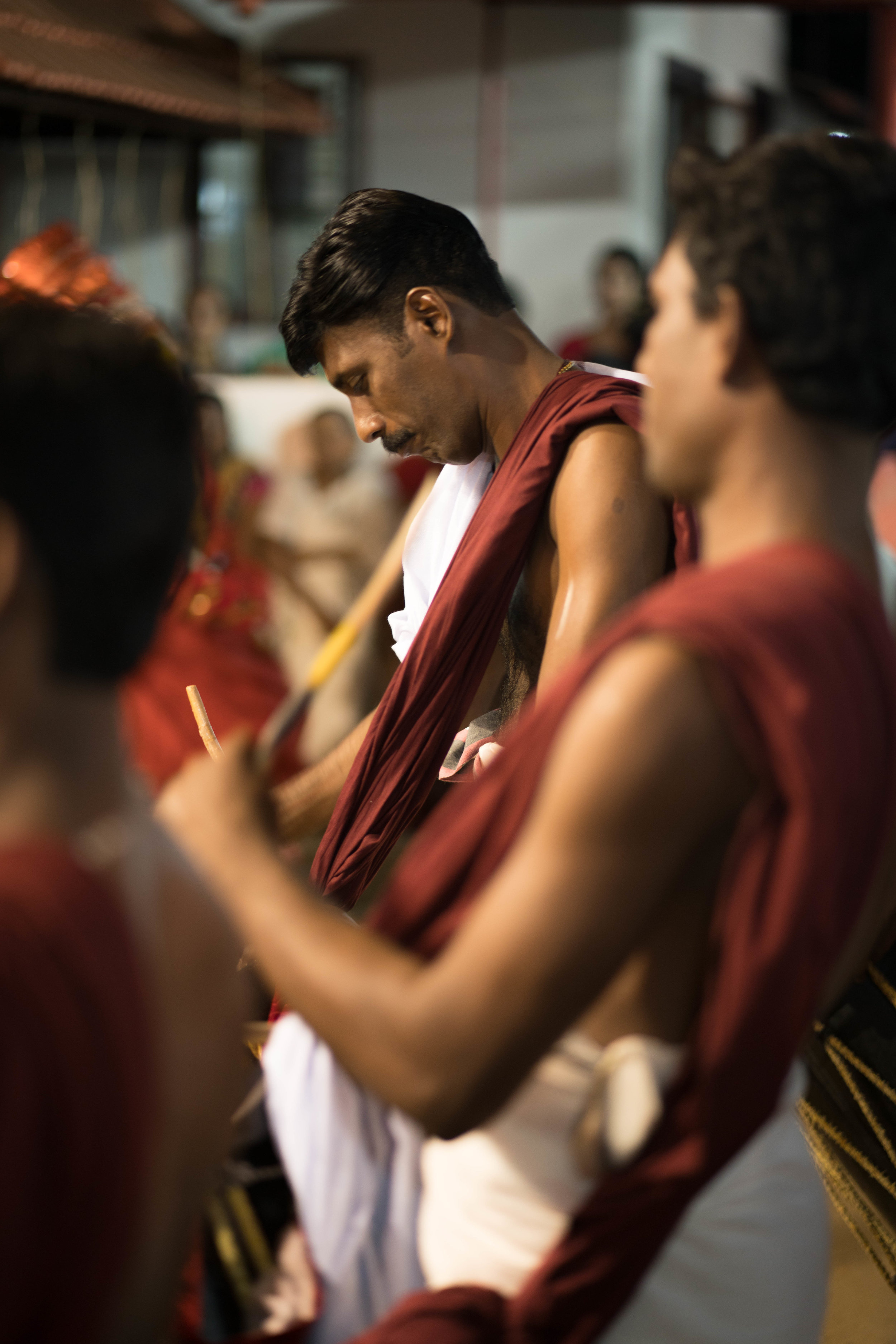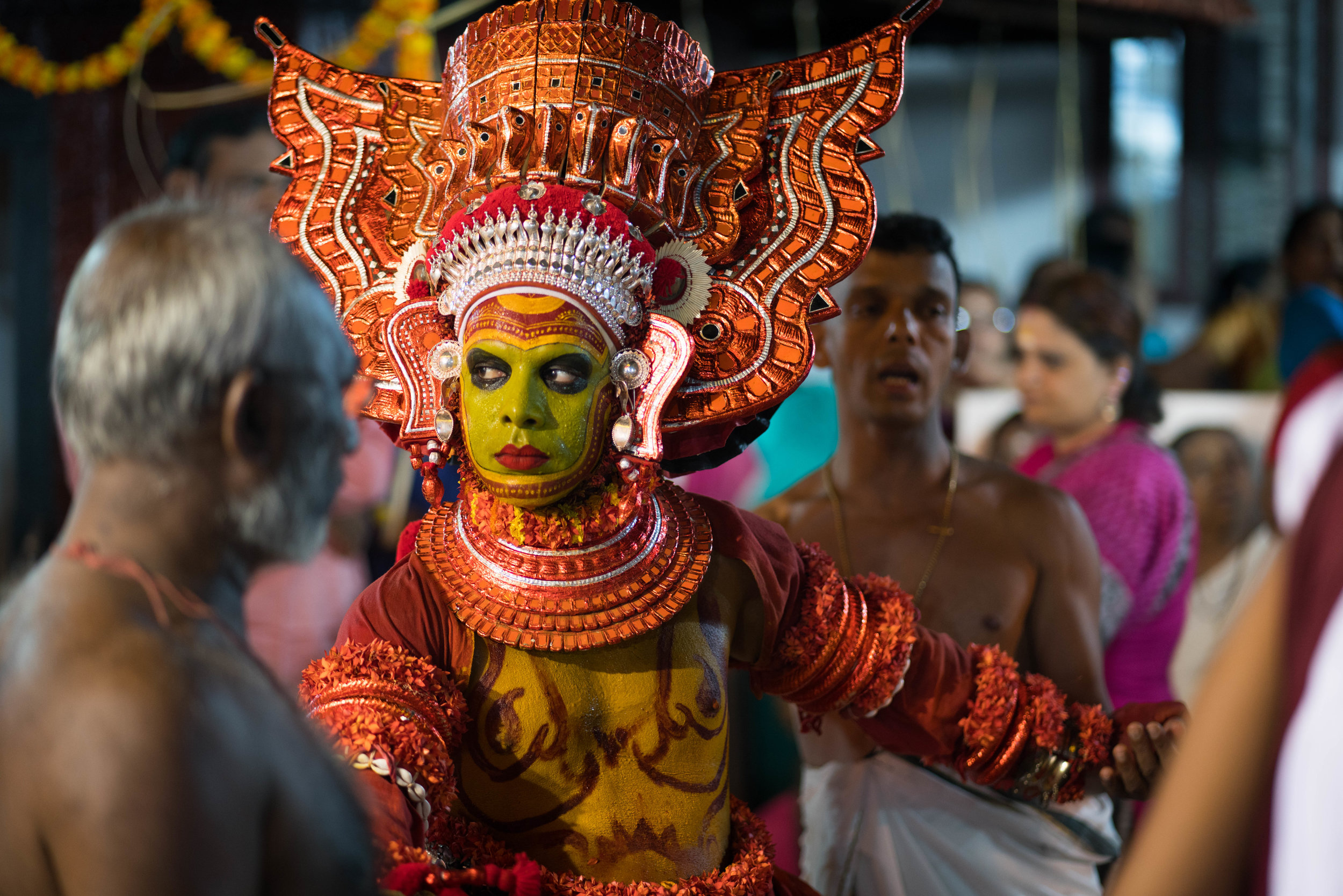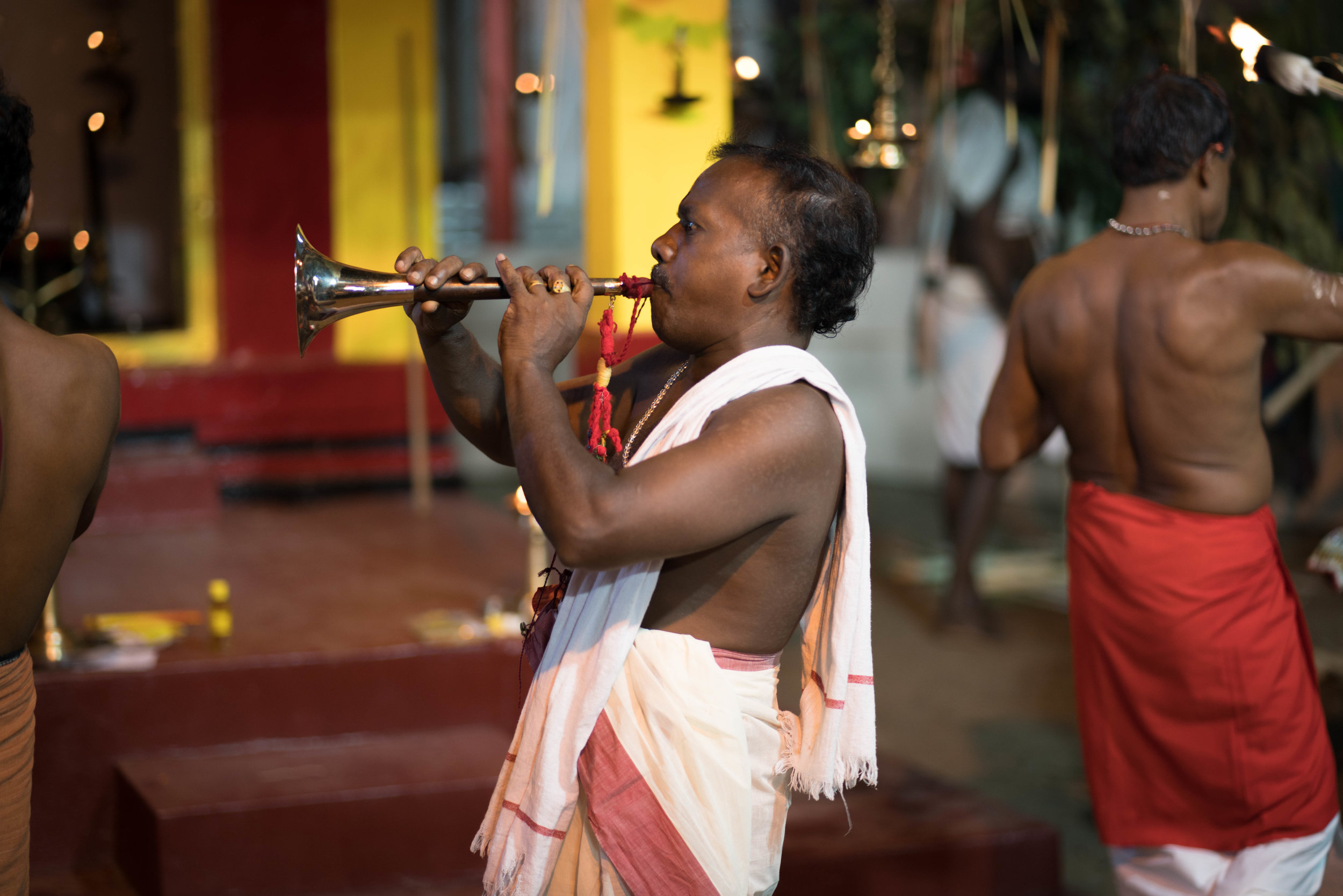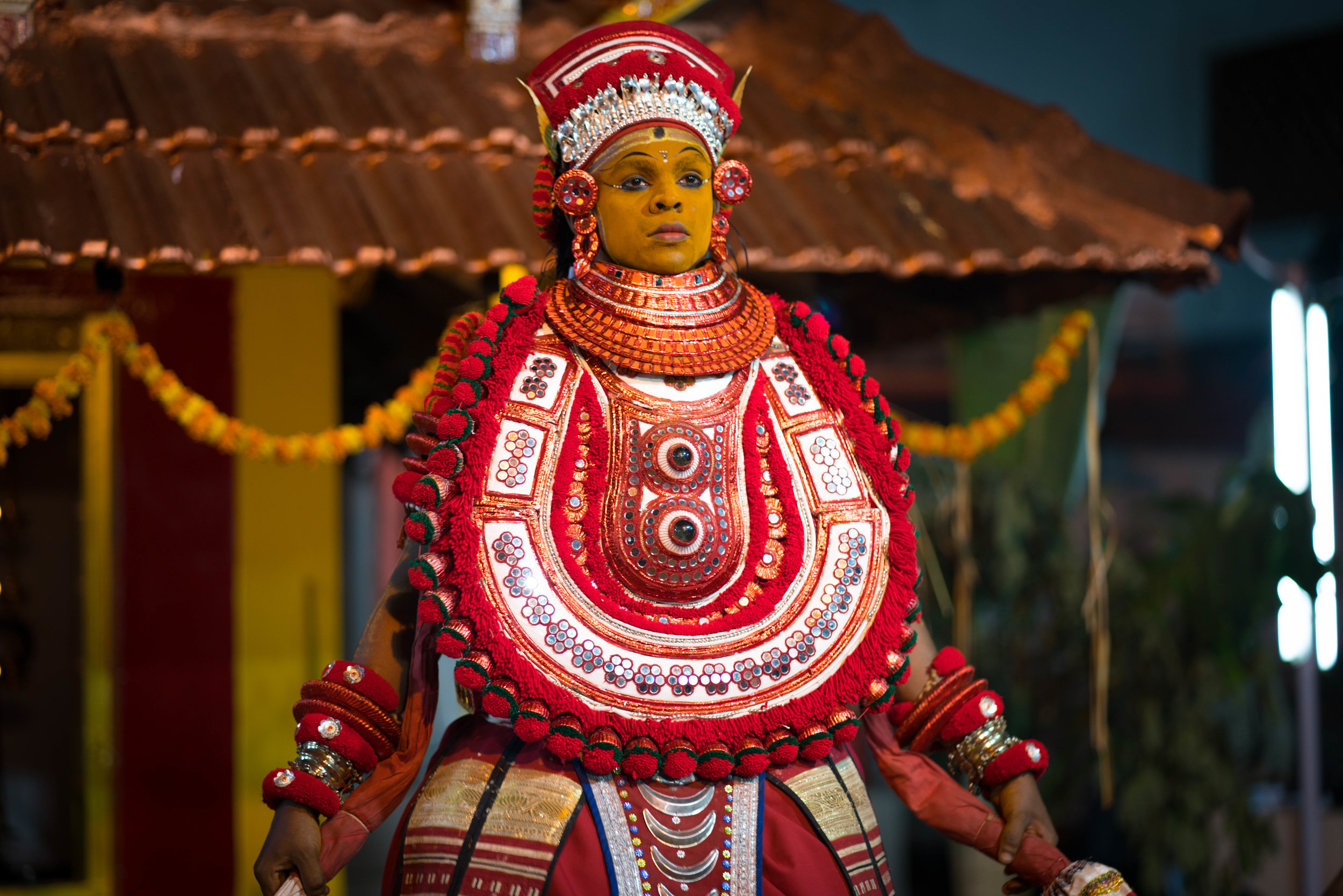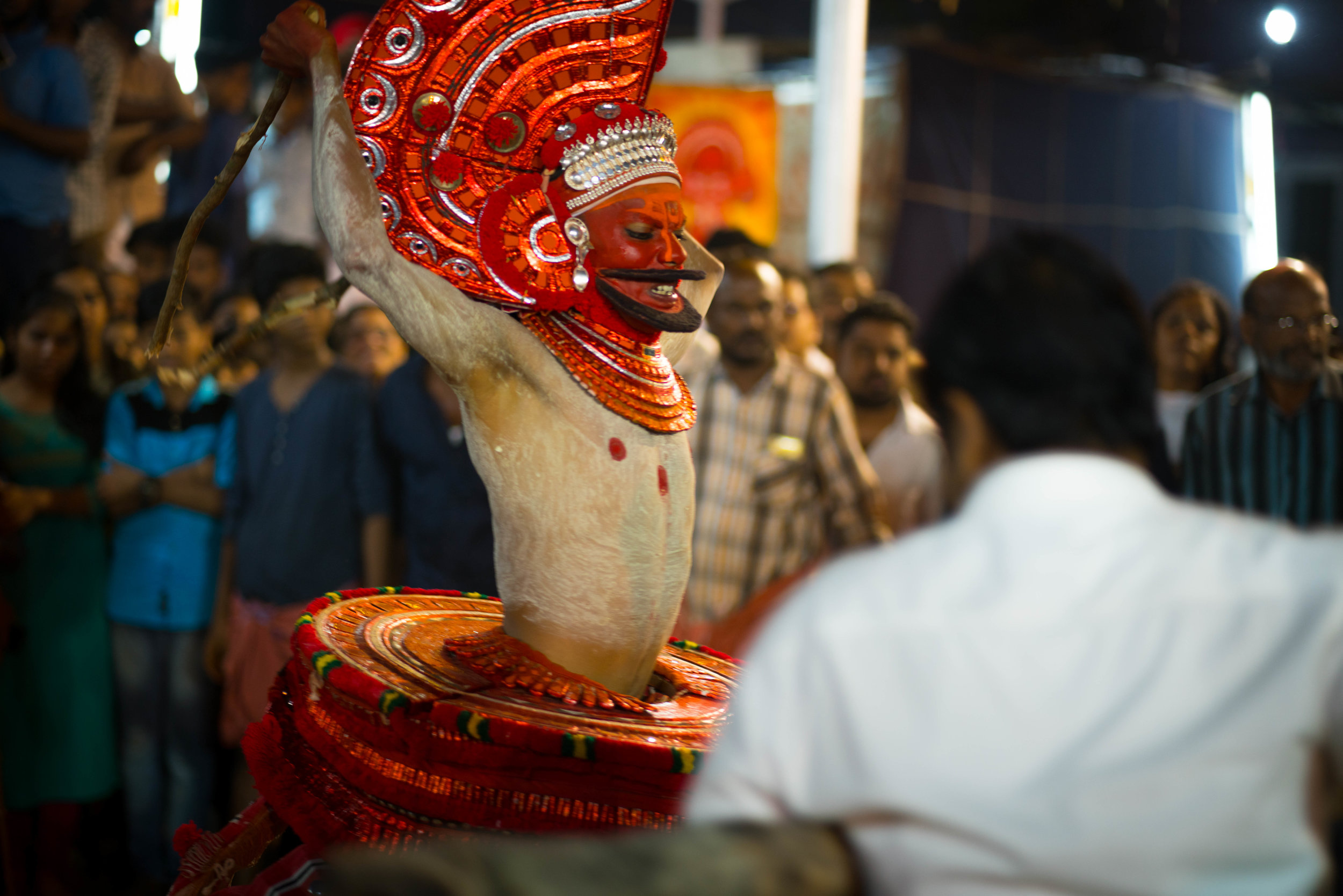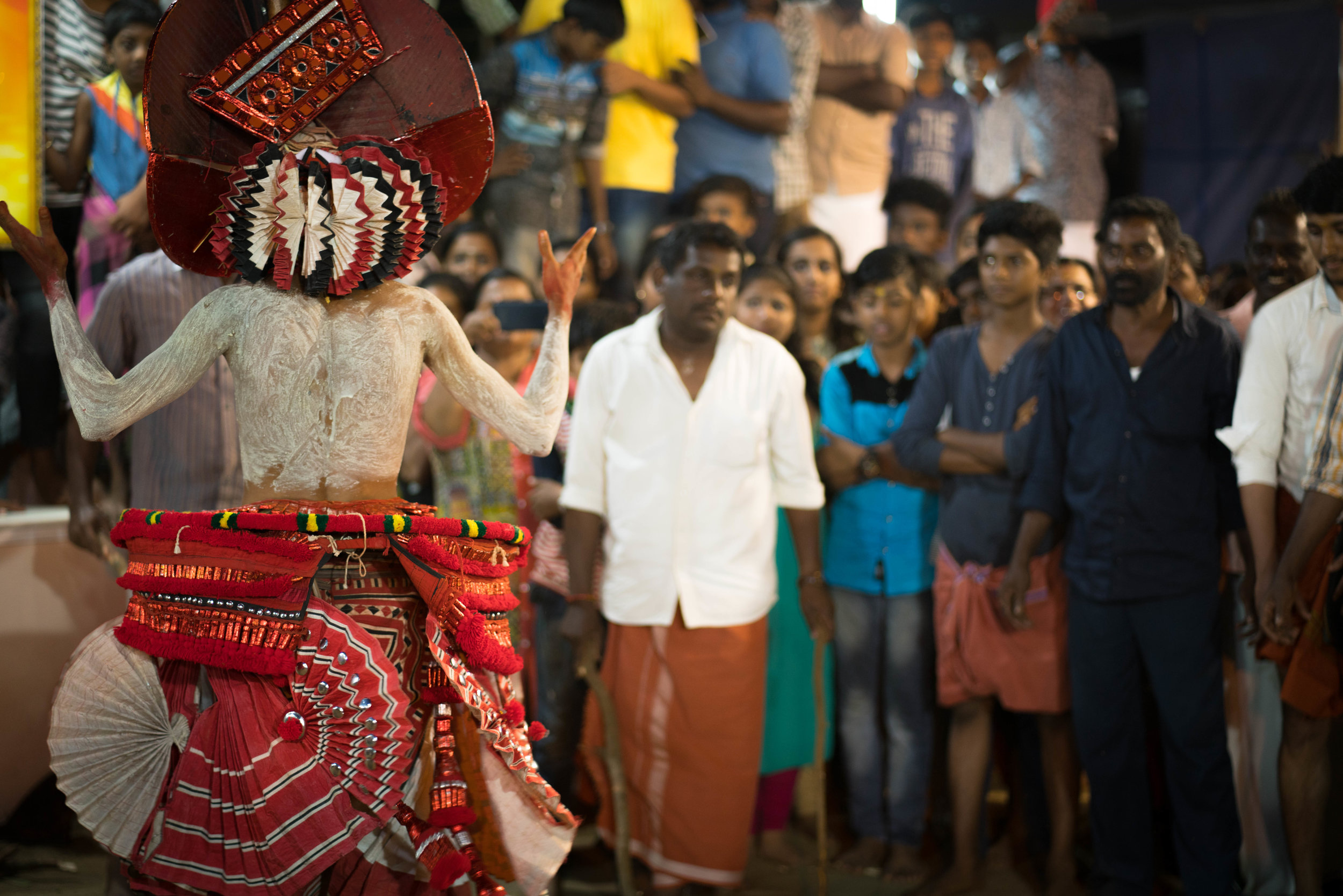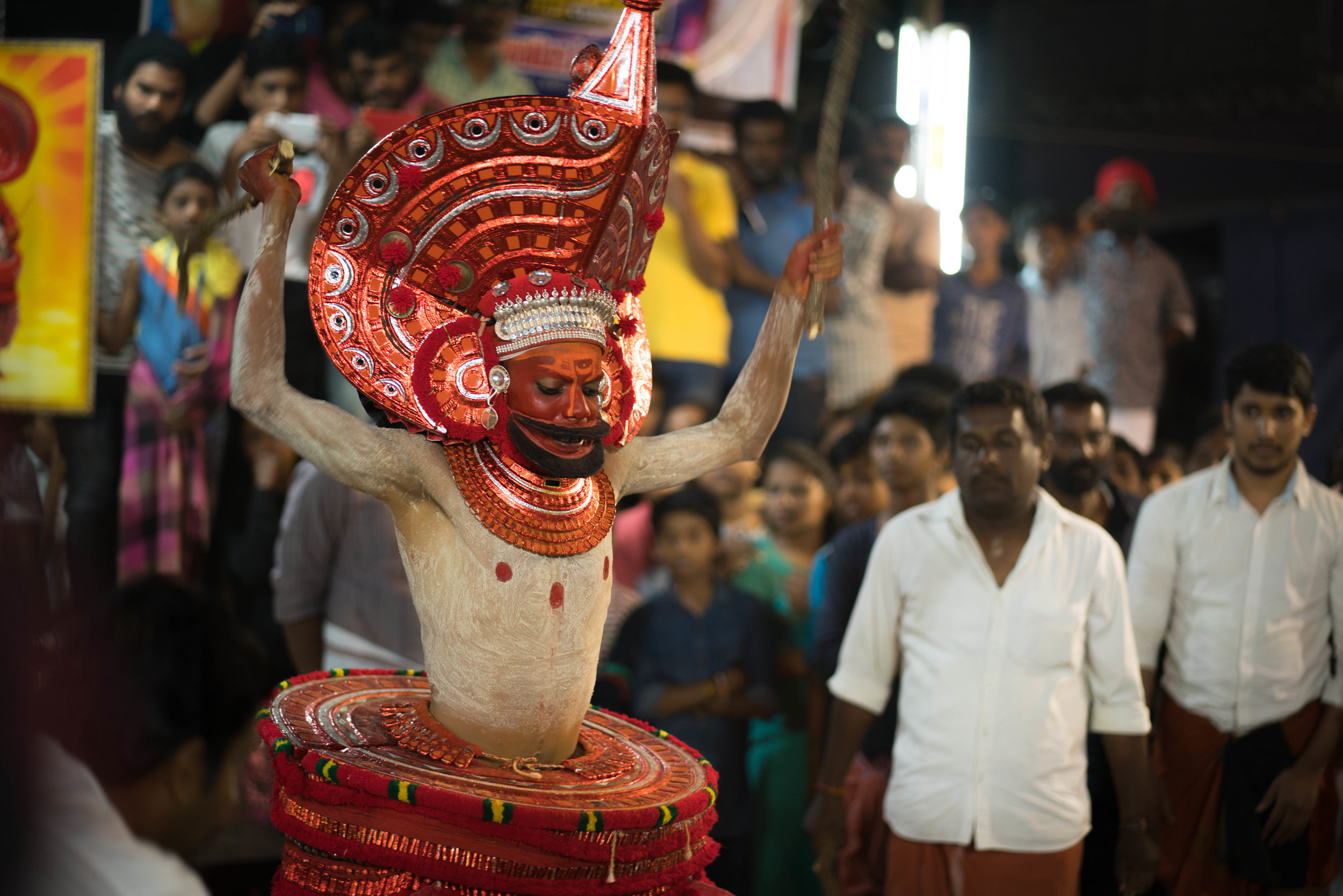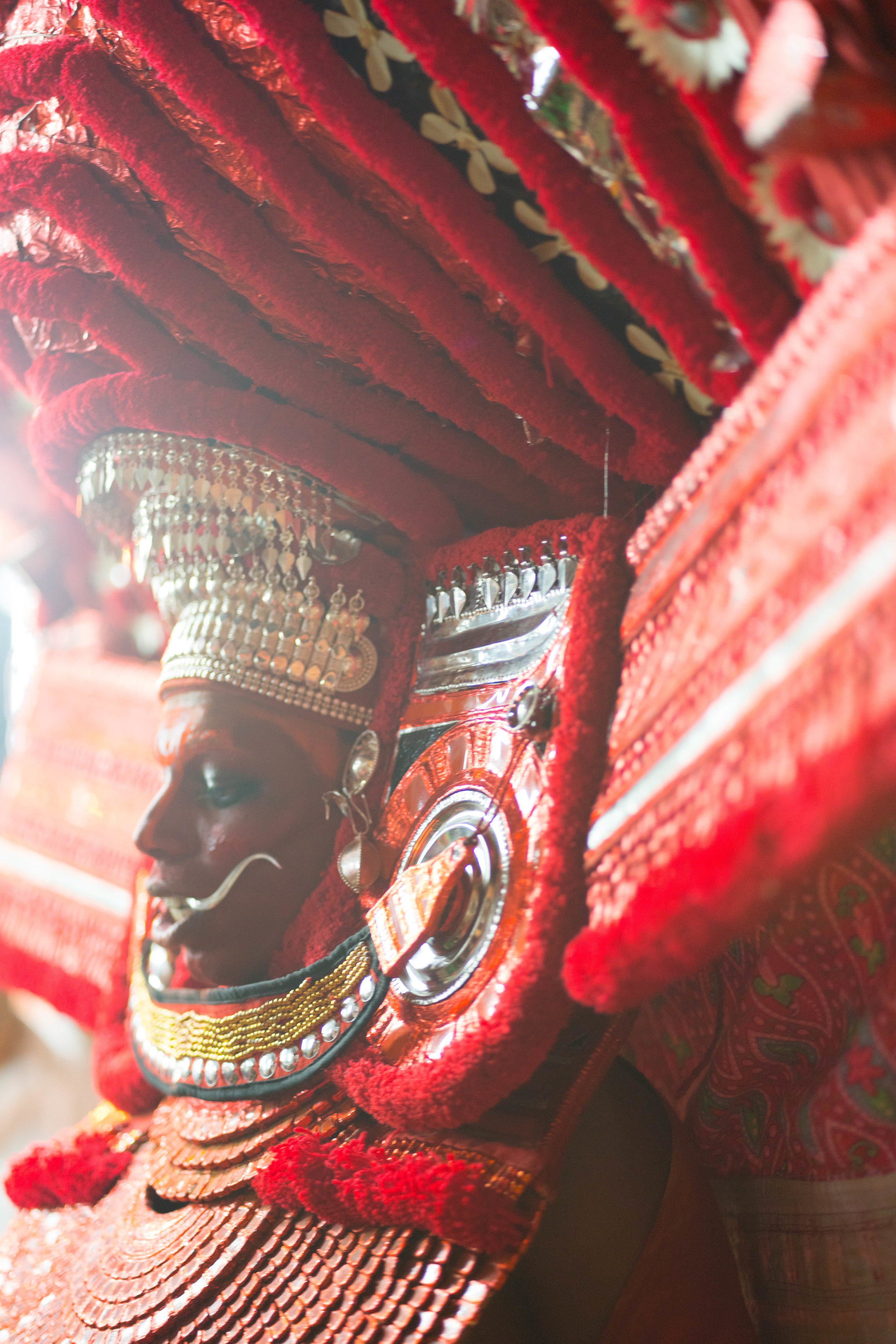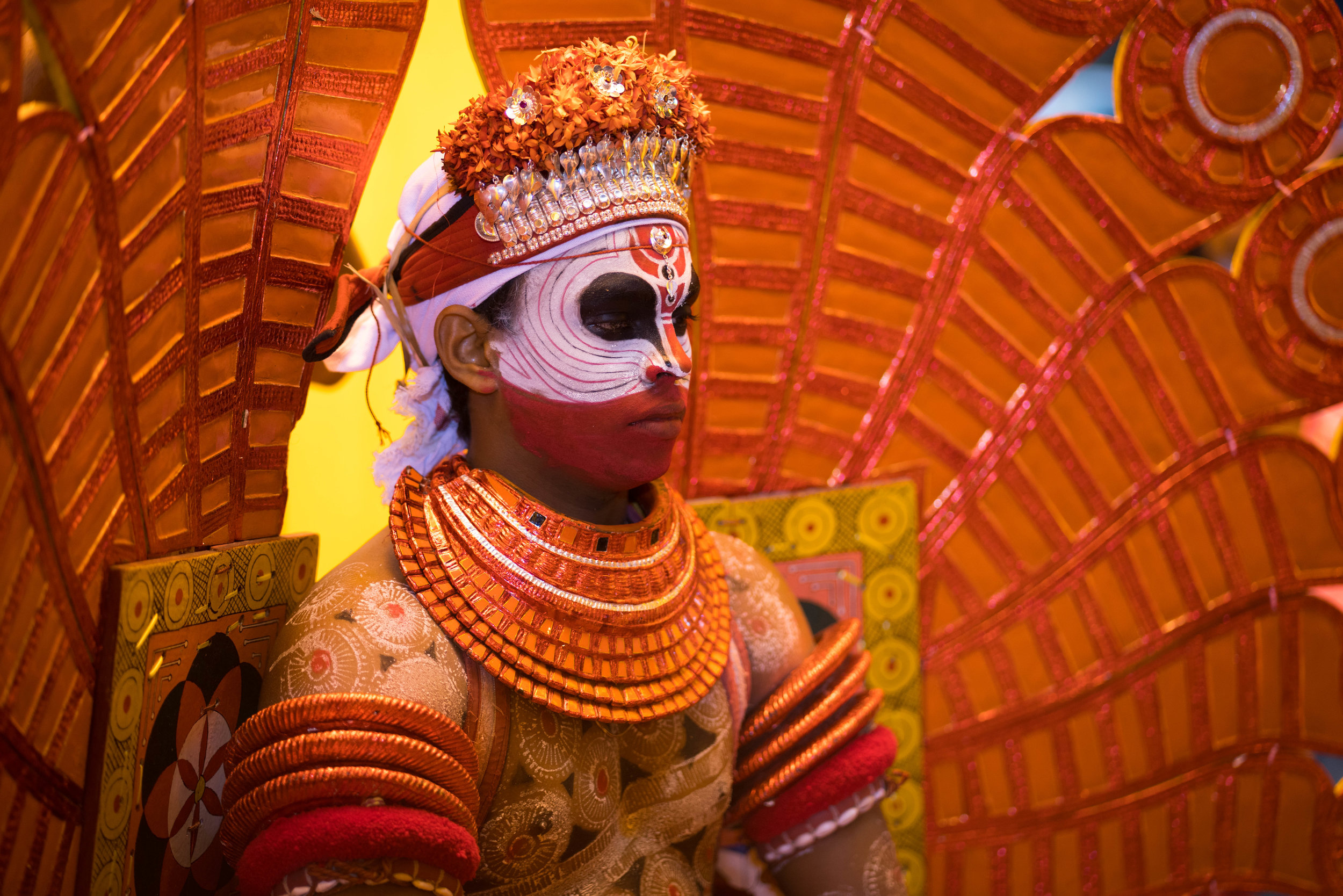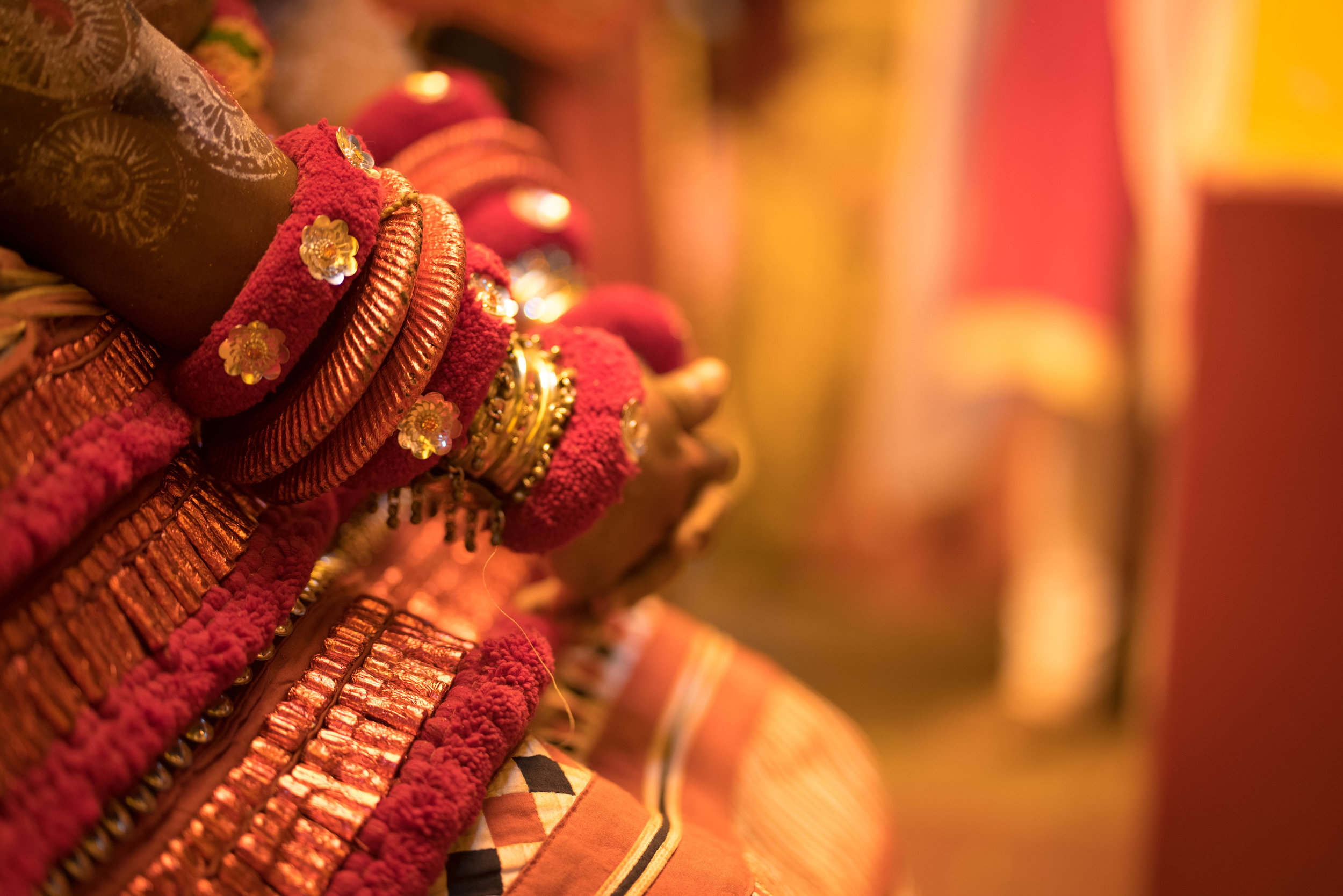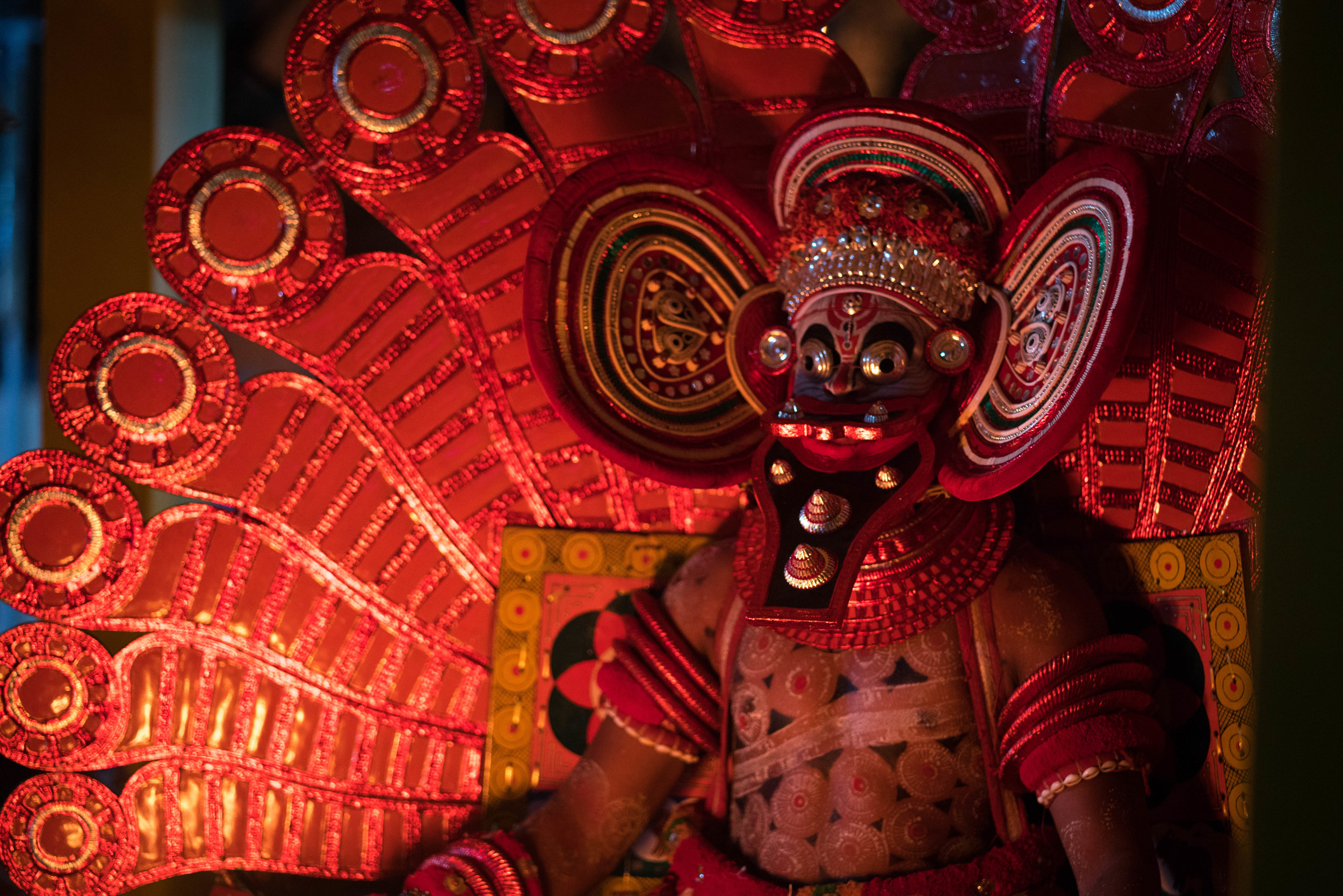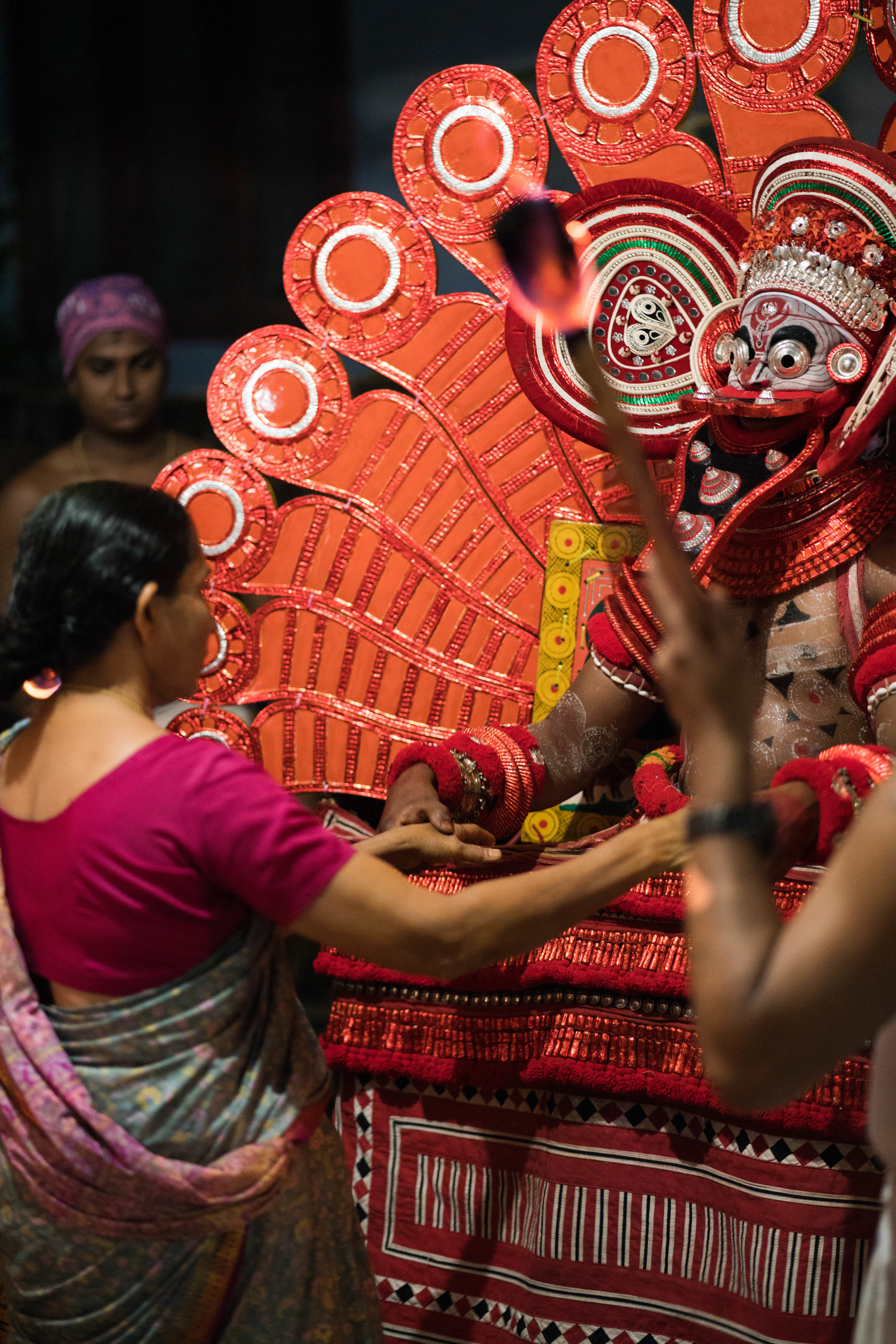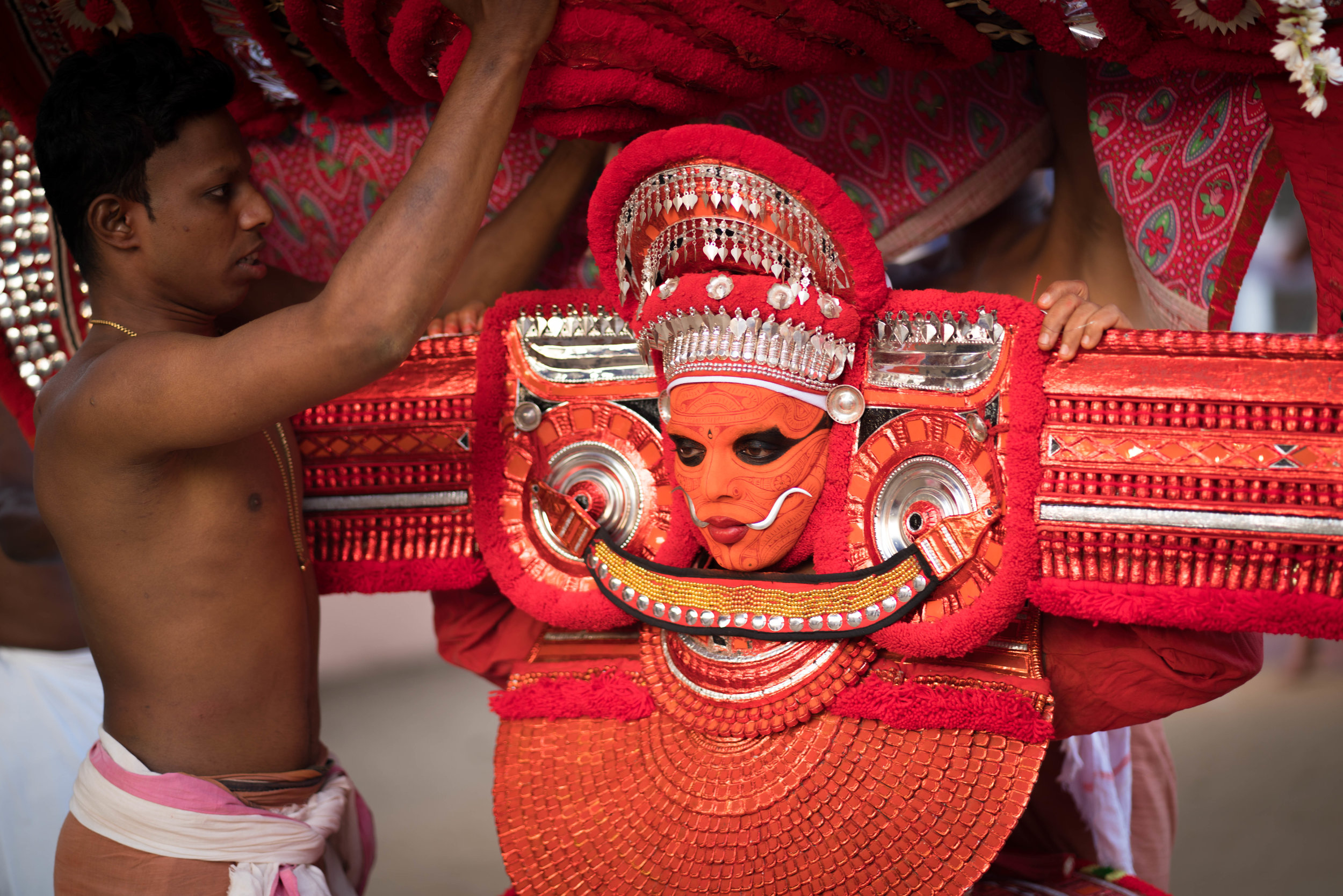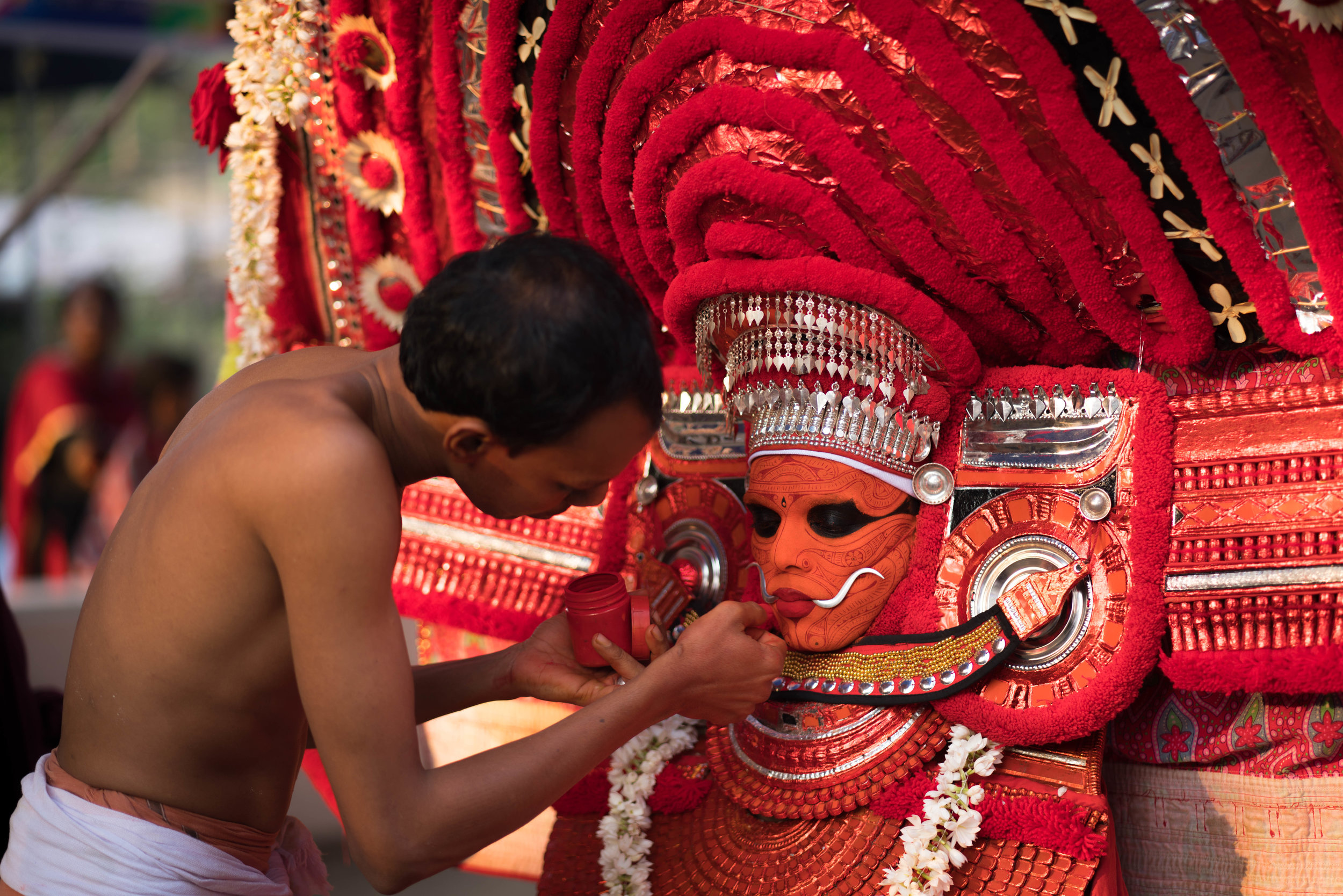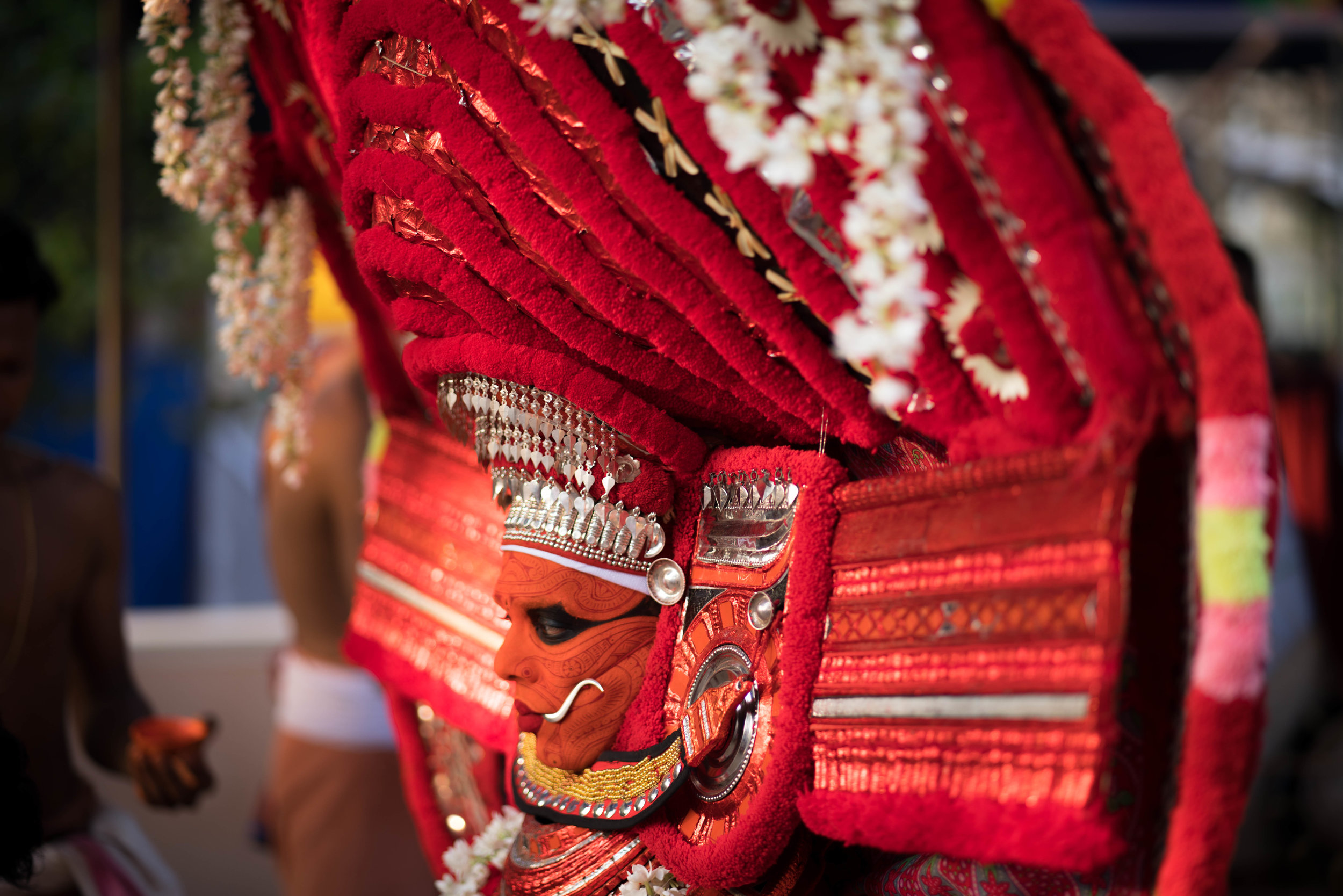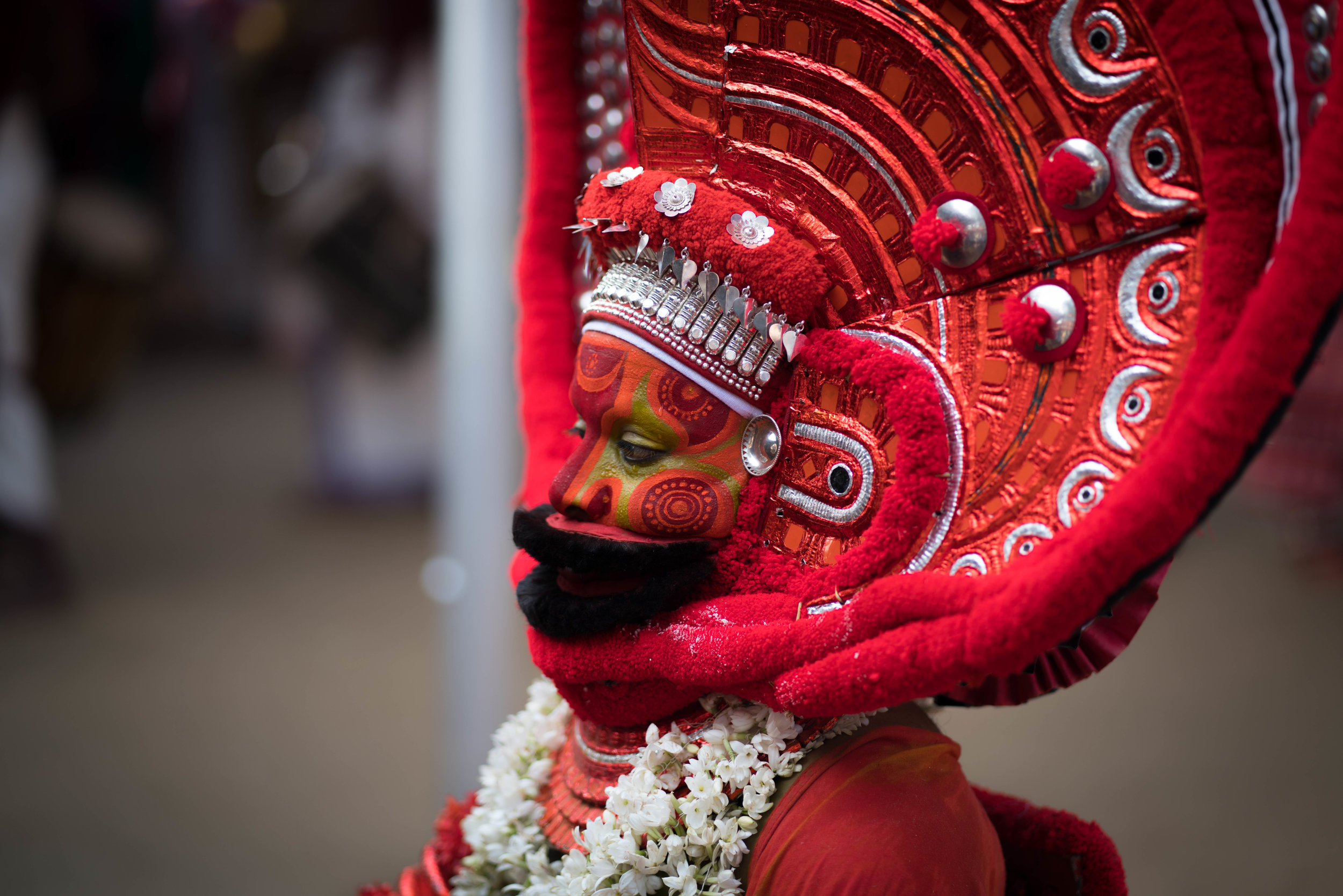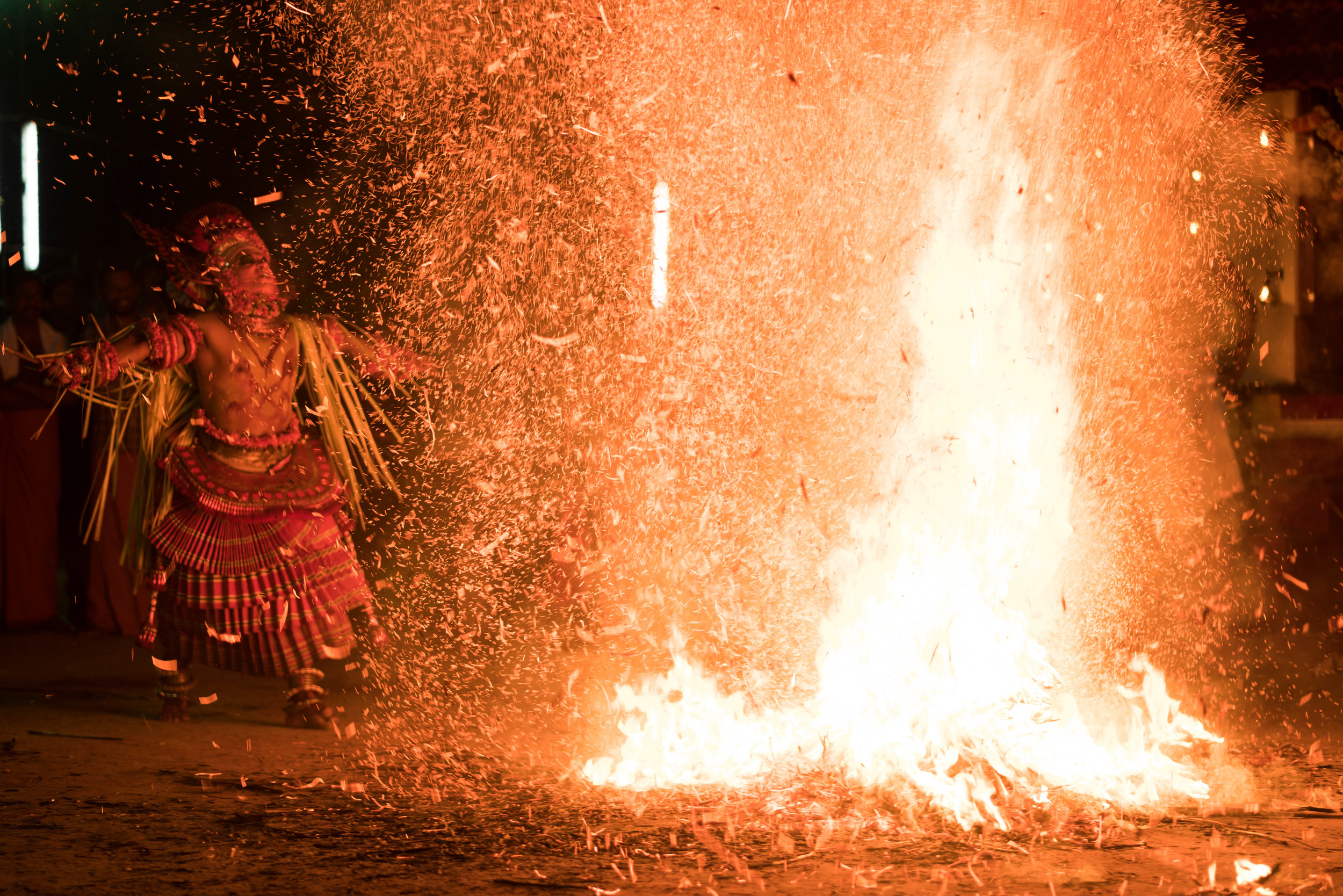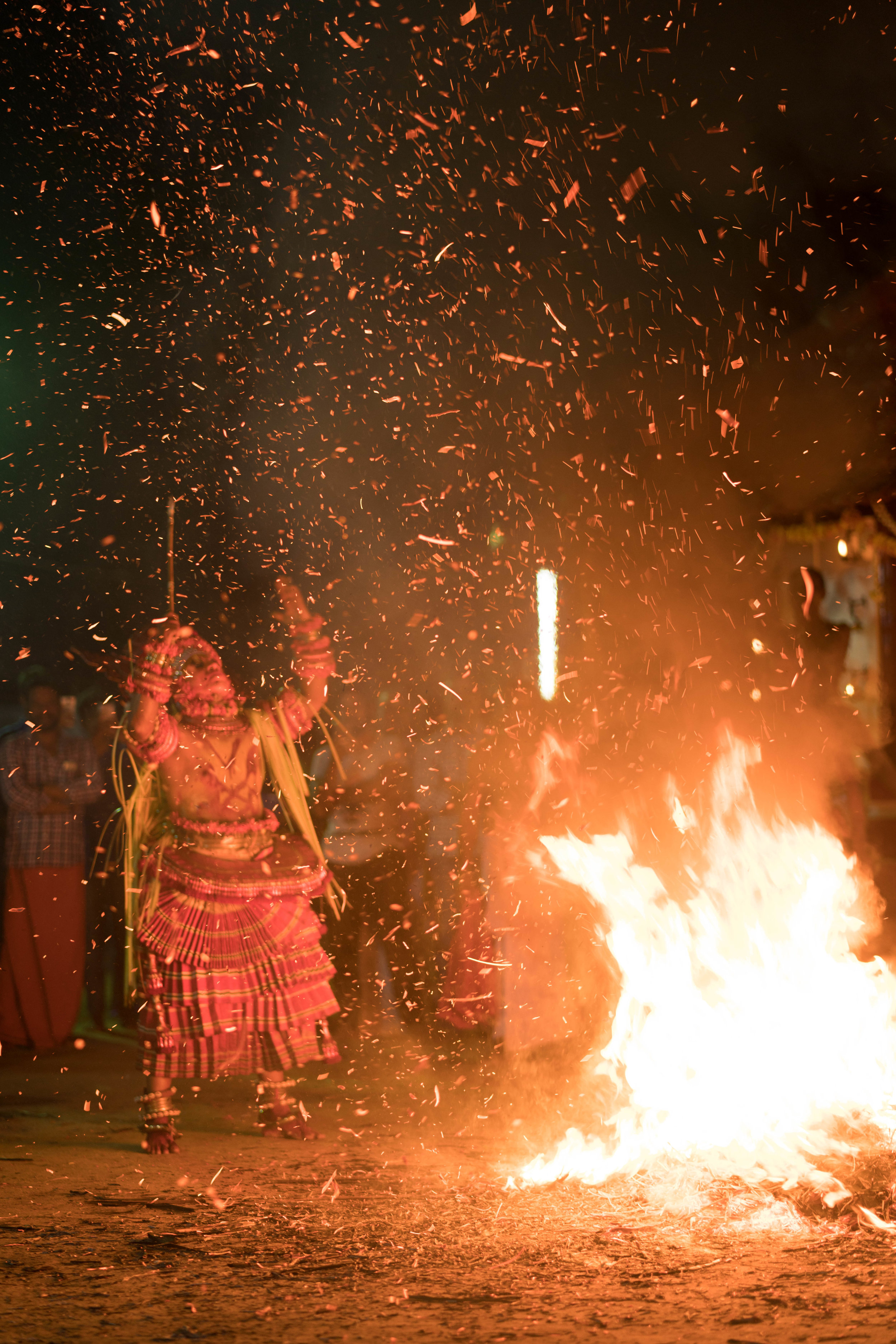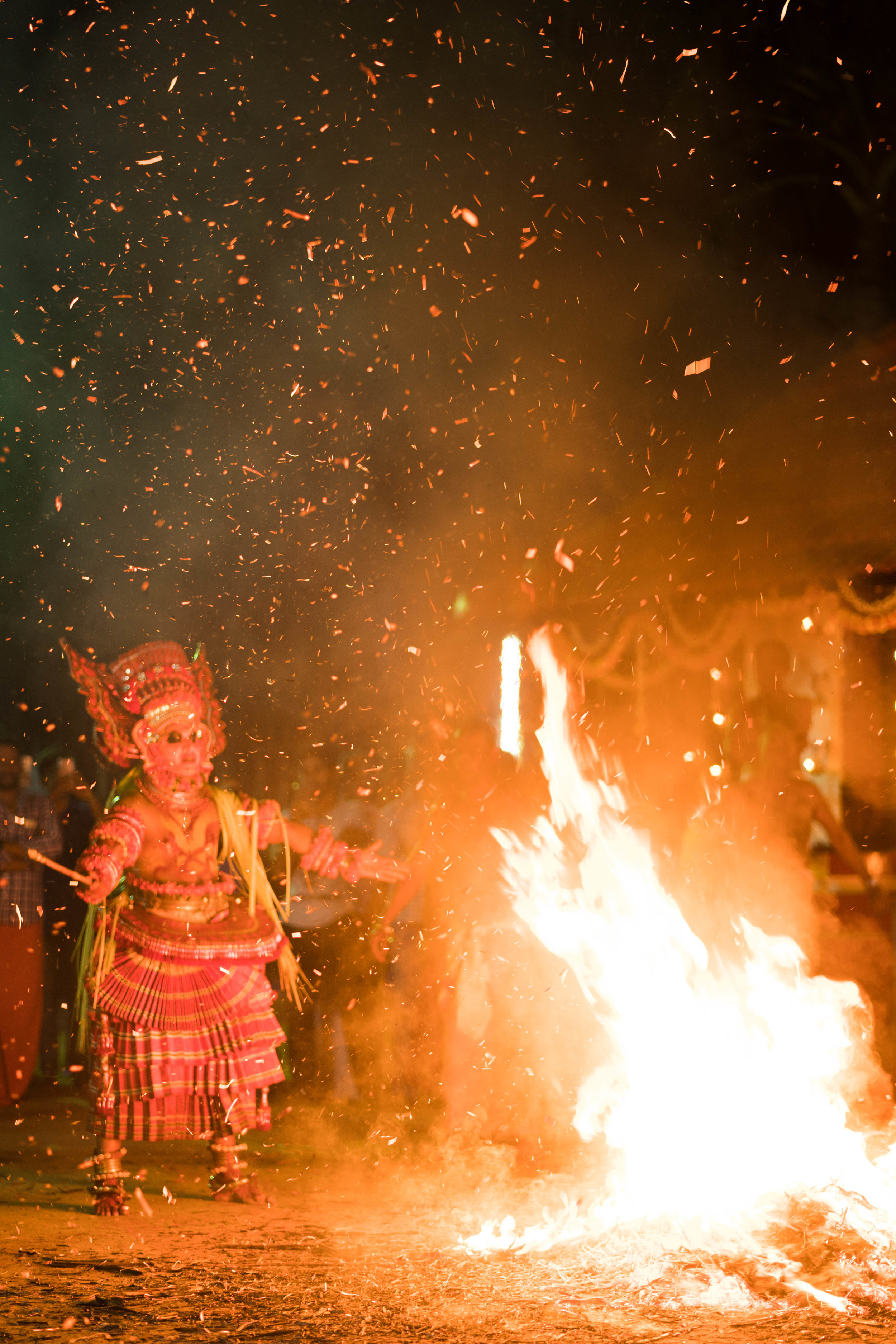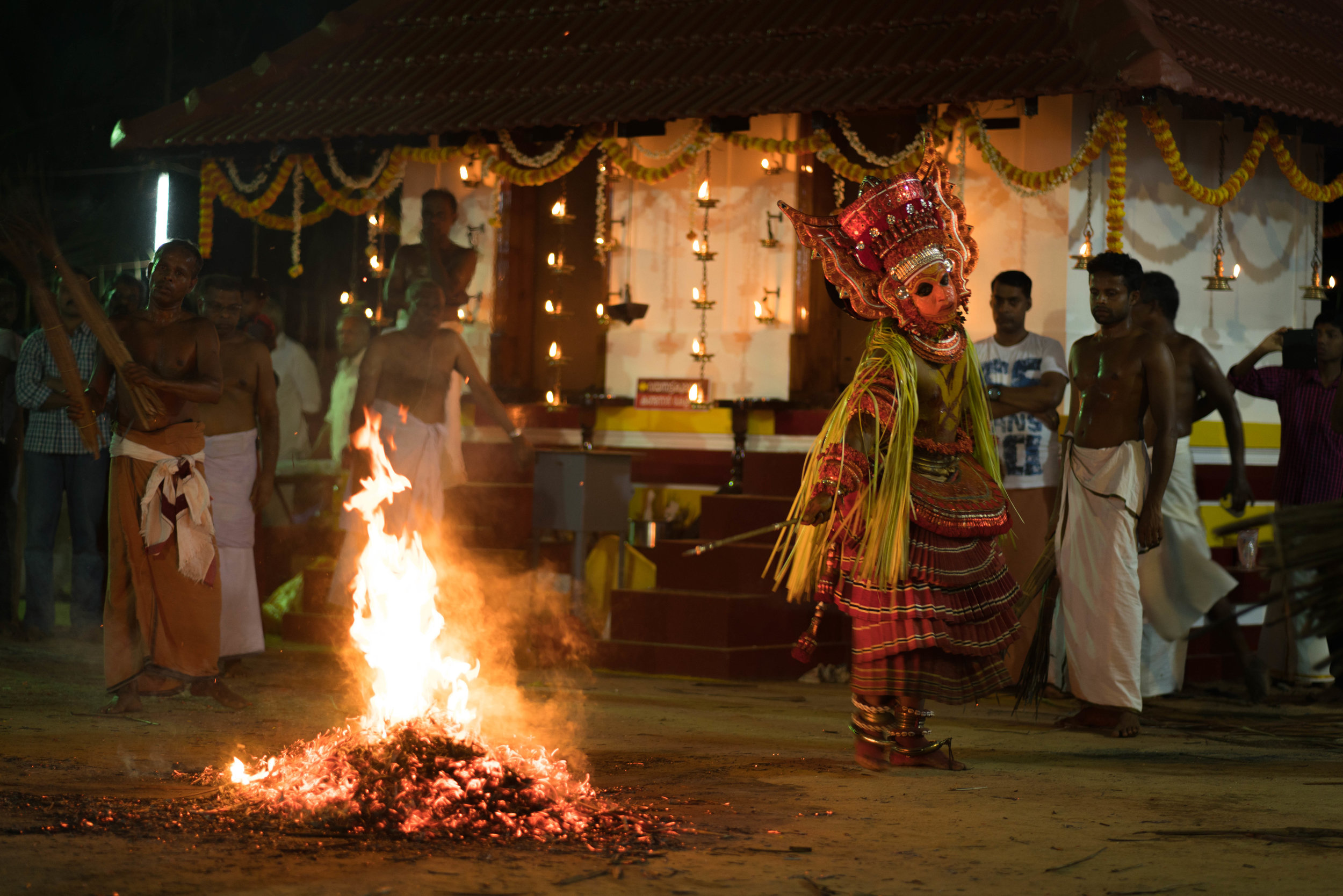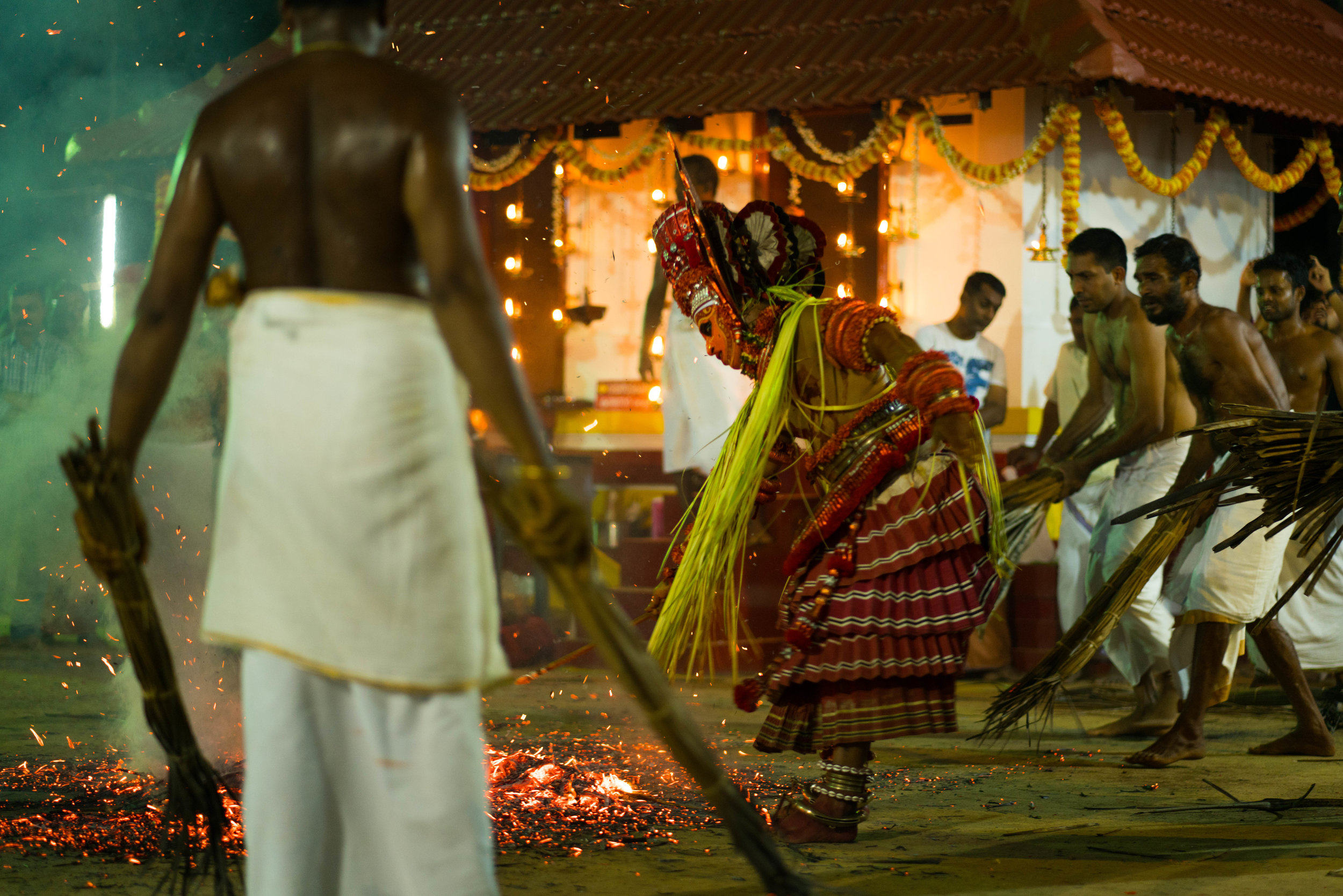The city of Kannur is known as “the land of looms and lores” for its industrial loom industry as well as its unique ritualistic folk tradition called Theyyam that only occurs in their village temples.
The theyyam derives from daivam, the Sankrit word for “god.” Some scholars maintain that the theyyams of northern Malabar (specifically the Kannur area) are a rare survival of some pre-Aryan, non-Brahminical Dravidian religious system of the region that was later absorbed into Hinduism.
It encompasses dance, mime and music. It exalts the beliefs of the ancient tribals who gave a lot of importance to the worship of heroes and the spirits of their ancestors. The ceremonious dance is accompanied by the chorus of such musical instruments as Chenda, Elathalam, Kurumkuzal and Veekkuchenda. There are over 400 separate Theyyams, each with their own music, style and choreography. Some are serious (think fire walking, fighting and animal sacrifice), others are playful (think performers embodying monkey gods and climbing trees or children playing tricks).
The theyyams take places small village temples called Kavus in the countryside not in Brahminical temples. Dances usually start in the evening provided by the temple and go all night into the early morning. For three months out of the year (Dec-Feb) - men from the lower caste Dalit group give up their jobs to transform into gods. They become the vehicles through which people can thank the gods for fulfilling their prayers and granting their wishes. Even the most bigoted and castiest of Brahmins worship and queue up to kiss their feet.
Being from a very low caste, the dancers live two lives. During theyyam times they are worshipped while for the rest of the year they work demanding manual labor jobs. The knowledge of theyyam is predominately past down through families, each dancer apprenticing for years before performing. Dancers make their own costumes from predominately natural materials and work together to prepare one another by face-painting and prepping costumes. Its an extremely laborious and physical work, dancing all night for days at a time.
The elaborate costuming, ritual of face painting, and powerful drumming aides the dancer to drop into their trance and embody the gods.
During performances, dancers have handlers to steady them with their huge headdresses and lead them around the kavu as they blindly trance dance and chant. Its incredible to see the crowd’s reactions - completely mystified and humbled by the god incarnate.
Despite the strong influence of Hinduism, this ancient Dravidian (referring to the indigenous culture of southern India) has managed to maintain parts of itself in modern times. If you’re interested in learning more about theyyam and its role as a potential social justice tool, check out the short story called “The Dancer of Kannur” in Nine Lives: In Search of the Sacred in Modern India.
